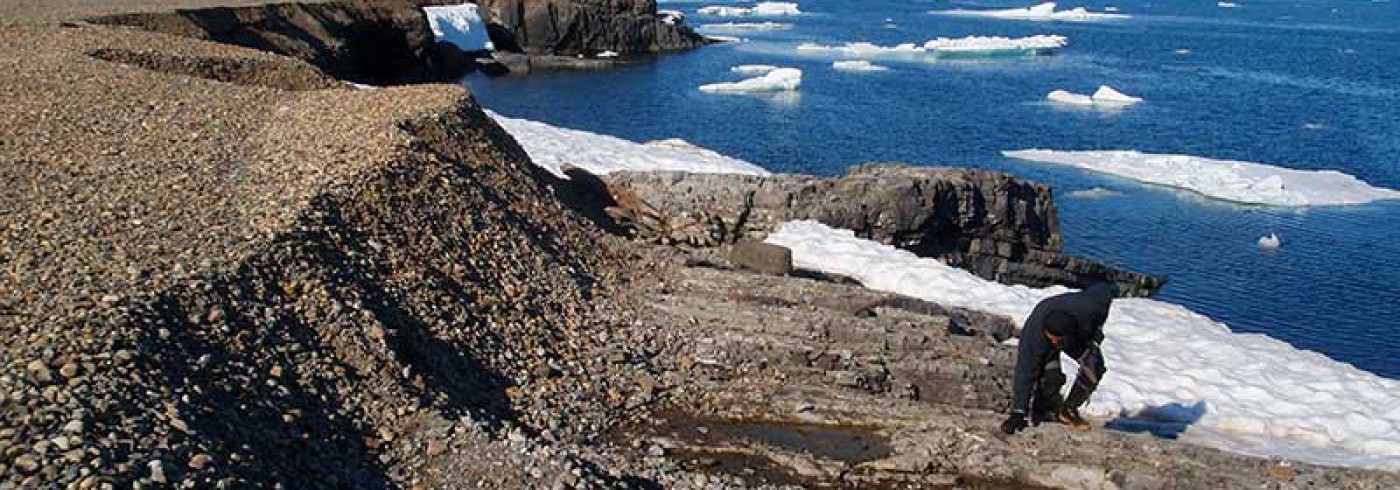The early diversification of brachiopods – new data from the Early Palaeozoic in Northeastern Spitsbergen
1 July 2008 - 31 August 2008Brachiopods (two-valved organisms comparable to living bivalves) represent one of the major types of animal life, appearing at around 540 Ma ago, as well as one of the dominant groups of marine benthic organisms. In a collaborative project with the University of Tromsö, the aim of the project is to systematically study the succession of brachiopods, their pattern of diversification and faunal changes.
Rock dating from this important part of Earth’s history is well exposed in Northeastern Spitsbergen, where fossiliferous successions are known from costal and stream sections from around Bassisletta, Hinlopenstretet, and Ny-Friesland.
The 220 metre thick mid Ordovician Valhallfonna Limestone is particularly rich in fossils and may in fact have one of the richest fauna from this interval of time. Although this fauna has been intensely studied since the 1970s, resulting in a very significant number of scientific publications, there are almost no studies of the associated rich fauna of brachiopods.
Fieldwork
Fieldwork was carried out during July and the beginning of August 2008 in the Profilbekken section and along the coastal sections at Bassisletta. The original plan was to transport the heavy field equipment by ship, but due to the severe ice conditions this proved impossible and the equipment had to be brought by helicopter, and as a result, the fieldwork was delayed. The extensive snow cover made it difficult to find a suitable site for setting up the camp, but eventually a snow free area was located some kilometres from the mouth of the Profilbekken stream, next to the Valhallfonna Glacier. The main objective of the first part of the fieldwork was to make a detailed lithological/straigraphical section through the Profilbekken section, but again due to the extensive snow and ice cover along the section, it was only possible to access limited exposures close to the mouth of the river, and at scattered localities in the rived bed itself.
Weather conditions were far from ideal and several days had to be spent in the camp due to heavy snowfall and strong cold winds. The camp also received a visit from a young polar bear, which managed to enter the camp area without setting off the tripwire.
By the end of July snow conditions had improved and a more continuous profile could be accessed so that by the end of the field season a more complete sample series could be obtained. In total, approximately 100 samples were taken, the majority from the exposed Cambrian-Ordovician sections in addition to collected macrofossils.
Preliminary results
The collected limestone samples will be dissolved to expose brachiopods and conodonts once they have arrived from Spitsbergen, but it is already clear from previous work that most of the samples will be productive. Dissolving limestone in weak 10 % acetic acid is a standard palaeontological technique for obtaining organophosphatic brachiopods and conodonts to be later examined under a Scanning Electron Microscope (SEM), and systematically treated. The isolated faunas will also be analyzed using standard quantitative techniques also aiming at obtaining a high-resolution biostratigraphy through the examined succession that will be essential for comparing the recorded faunal changes with other regions.



